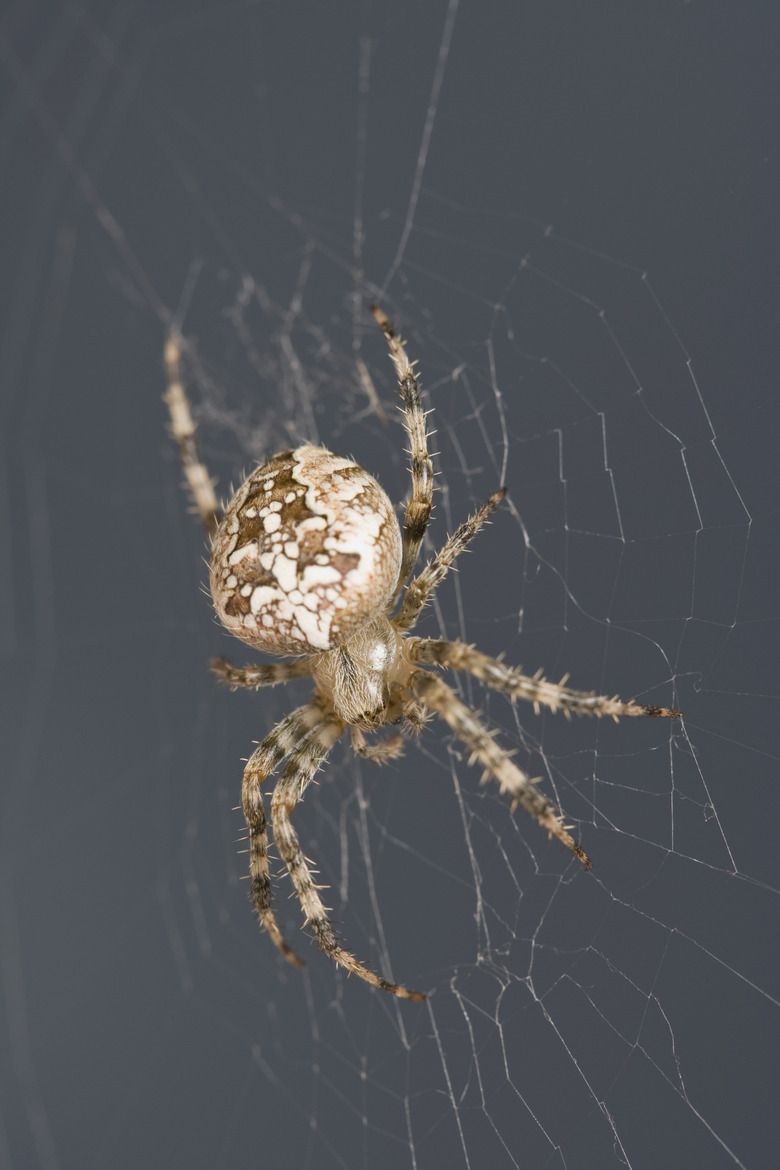Types Of Dangerous Spiders
Arachnophobia, the fear of spiders, affects the psyches of many people to some degree, and the mere glimpse of a spider can send even the biggest individuals scrambling across the room. While most spiders are harmless to humans, several species do possess venom that can cause serious damage to a person if bitten. Of the world's five deadliest spiders, only two species, the black widow and brown recluse, are indigenous to the United States.
Black Widow
Black Widow
Black in color, with characteristic red markings on their abdomen that usually connect to form an hourglass shape, the black widow's name comes from the female of the species' tendency to devour the male after mating. The black widow's bite can cause severe pain that can take several days to subside, but it is rarely fatal to humans. Black widows construct their scaffold-shaped webs near the ground and often build their webs in protected areas such as stacks of firewood, beneath floorboards and piles of unused boxes.
Brown Recluse
Brown Recluse
Common in the lower Midwestern region of the U.S., the brown recluse can grow to five-eighths of inch in length, with a leg span of more than an inch in diameter. The brown recluse's bite is generally painless, but it can cause tissue necrosis if untreated. Anyone who suspects being bitten should seek immediate medical treatment, preferably from a dermatologist. Brown recluses build their webs in corners, closets and any other out-of-the-way location. Brown to light brown in color and with a violin-shaped marking on its bck below its head, the brown recluse is distinguishable by having only six eyes instead of the usual eight possessed by most arachnids.
Redback
Redback
Indigenous to the Australian outback, redback spiders have black bodies with visible red or orange stripes on the back. The female redback possesses a highly venomous bite that can cause severe pain, muscle weakness, vomiting and nausea in humans. The redback's venom contains a neurotoxin that destroys neurotransmitters in the human body and can cause death if not immediately treated with the anti-venom.
Funnel Web Spider
Funnel Web Spider
Another deadly spider indigenous to Australia, the funnel web spider has a glossy black or brown body and an extremely aggressive attitude. The funnel web spider will stand on its hind legs and brandish its fangs toward whatever it perceives as a threat. The male funnel web spider's venom is five times more poisonous than the female's and can cause muscle spasms, sweating and watery eyes. The spider's venom also contains a neurotoxin that can cause death to humans not immediately treated with the anti-venom.
Brazilian Wandering Spider
Brazilian Wandering Spider
Perhaps the most venomous spider in the world, the Brazilian wandering spider, or banana spider, grows up to 5 inches in length and is extremely aggressive. The Brazilian wandering spider does not spin a web but rather crawls on the jungle floor hunting for its prey. The spider shows no fear toward humans and will attack if it feels threatened. The venom of the Brazilian wandering spider contains what many experts describe as the deadliest neurotoxin of any spider, and it can cause loss of muscle control, shortness of breath, paralysis and death due to asphyxiation.
Cite This Article
MLA
Lemke, Timothy. "Types Of Dangerous Spiders" sciencing.com, https://www.sciencing.com/types-of-dangerous-spiders-12581159/. 1 August 2011.
APA
Lemke, Timothy. (2011, August 1). Types Of Dangerous Spiders. sciencing.com. Retrieved from https://www.sciencing.com/types-of-dangerous-spiders-12581159/
Chicago
Lemke, Timothy. Types Of Dangerous Spiders last modified March 24, 2022. https://www.sciencing.com/types-of-dangerous-spiders-12581159/
